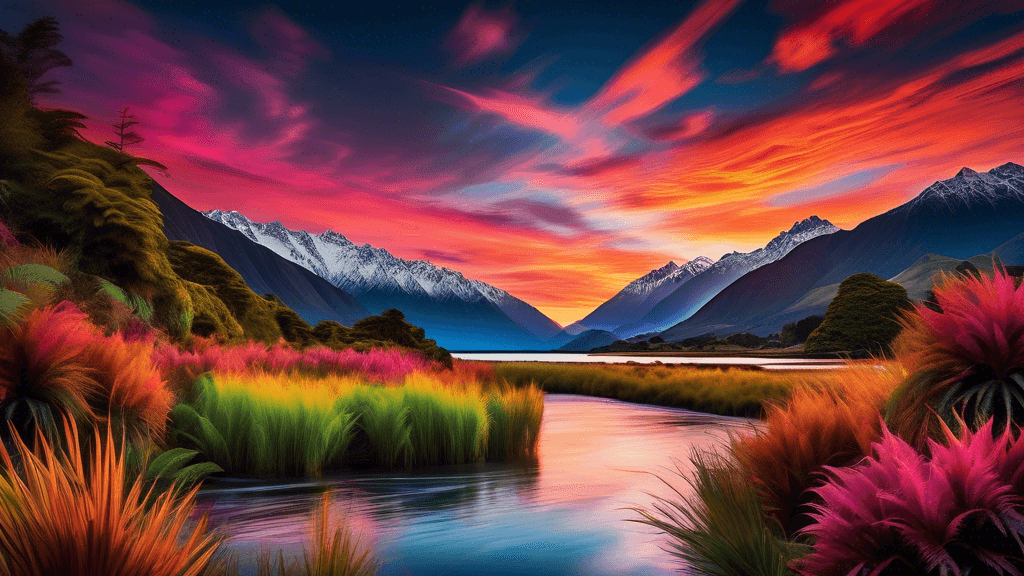
Capturing Aotearoa: High-Resolution Landscape Photography as Visual Storytelling
Share
Capturing Aotearoa: The Art of High-Resolution Landscape Photography
For anyone who has ever gazed upon the lush, rolling hills of the North Island or the jagged peaks of the Southern Alps, the unique topography of New Zealand or Aotearoa, as it is known in Māori, offers an unparalleled panorama that demands high-resolution documentation. Landscape photography in this region is not just about capturing images; it's about telling stories through visuals, preserving nature, and inspiring conservation through arresting imagery.
Why Does High-Resolution Matter in Landscape Photography?
In the context of Aotearoa's diverse landscapes, from the serene beaches of Abel Tasman to the mystical fjords of Milford Sound, high-resolution photography does more than just document sights; it captures the essence. But why is high resolution so critical in this field? High-resolution images:
- Detail and Depth: Allow photographers to capture every nuance of a scene, from the delicate textures of flora to the dynamic range of light and shadows, offering viewers a more immersive experience.
- Post-Processing Flexibility: Provide more data, which means more leeway in editing. Photographers can crop, adjust, and manipulate images without significant loss in quality.
- Large Format Outputs: Enable printing on large scales without compromising on the sharpness and clarity necessary for gallery-quality presentations or detailed exhibitions.
The Technique Behind High-Resolution Landscape Captures
Capturing the essence of Aotearoa's landscapes in high resolution requires more than just an advanced camera setup. The real magic lies in the technique and the eye of the photographer. Some crucial technical considerations include:
- Time of Day: The 'golden hours' at dawn and dusk offer the best natural lighting for landscape photography, casting dramatic shadows and a warm glow that enhances textures.
- Weather Conditions: Interesting weather patterns can transform a mundane scene into a spectacular one. Capturing post-storm mist or early morning fog weaving through valleys can add a mystical element to your images.
- Equipment: Using a tripod is essential for stability, especially when working with slow shutter speeds in low light conditions. A high-quality DSLR or mirrorless camera capable of large file outputs is critical.
- Lens Choice: Wide-angle lenses are typically preferred for landscape shots as they have the ability to capture expansive views, but telephoto lenses can also be valuable for isolating distant features of interest.
Visual Storytelling Through Landscape Images
Every landscape photograph tells a story. Consider the lone, gnarled tree standing resilient against the rugged backdrop of the Central Otago. Such images speak volumes about survival and adaptation. Or the calm, reflective waters of Lake Matheson, mirroring the sky and mountains, telling tales of tranquility and reflection. Through high-resolution images, these narratives are not just seen but felt.
Emphasizing Conservation Through Visual Impact
To see it is to preserve it. This quote reflects the philosophy many photographers uphold. By presenting the stark beauty of Aotearoa's environments in high detail, photographers play a crucial role in environmental conservation. They highlight the fragility and the resilience of these landscapes, compelling viewers to consider their environmental impact and the need for conservation efforts. Engaging with local conservation groups and portraying their efforts in your work can also add a meaningful layer to your visual narratives, making the connection between what is seen and what needs to be saved tangible and urgent.
Conclusion: A Call to Action
If you are a photographer or an enthusiast, understanding and practicing high-resolution landscape photography can transform your approach to the art. It's not merely about equipment and techniques; it’s fundamentally about perspective. How do you see the world, and more importantly, how do you wish to show it to others?
The landscapes of Aotearoa are more than just scenic. They are stories of the past, present, and future, waiting to be told through your lens. Are you ready to tell these stories? Remember, each shot contributes to the broader narrative of conservation and appreciation. Let's aim to not only capture but also protect the stunning vistas of our planet. Start today by planning your next photographic expedition with a narrative in mind, because every picture has a story, and every story deserves to be told beautifully.





